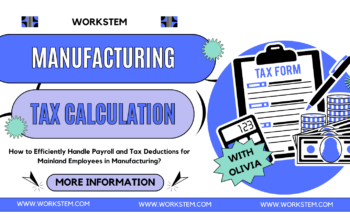There are lots of reasons why employees choose to leave their jobs. The relationship between employees and the company has already changed from the moment that the “resignation letter” was delivered. In particular, “final pay” is calculated differently from others . So what can employers do to avoid unnecessary losses?
How to solve the “final pay” equation?
In order to learn how to calculate the final pay, we should mainly find out the composition of the final pay, including any unpaid wages, i.e. basic salary + commission (if any) + OT allowance (if applicable), and pay in lieu of any unpaid annual leave. In accordance with the relevant provisions of the “Mandatory Provident Fund Schemes Ordinance”, the MPF of the current month will also be deducted (MPF is not required to be taken into account if the employee has worked with the company for less than 60 days).
For employees who are employed on a monthly basis, if the period from the date of resignation to the last working day is exactly a full month (e.g., June 1st to June 30th), only the contract monthly salary will be paid for the final payment. However, if the last working day is not the last day of the month, such as the 10th or 20th, how to calculate these days? According to “the Employment Ordinance”, employers are required to calculate the statutory entitlements of an employee on the basis of the 12-month average daily wage (ADW), whether employed on a monthly or daily basis.
Example 1: Fiona is a health consultant at a chain pharmacy with a monthly salary of HK$12,000, paid on rest days. Assuming Fiona decides to leave on January 20th, i.e. the last working day, the employer will pay her from January 1st to January 20th. The formula is as follows:
Average daily wage (ADW) = (total wage for 12 months – wages not included) / (365 days – period not included)
Wages earned during the 12-month period prior to the date of resignation: HK$12,000 x 12 =HK$144,000, including wages earned from work and paid leave.
Leaves taken during the 12-month period: 71 days of full-paid leave, including 52 rest days, 12 statutory holidays, 7 days of annual leave. If all of them are paid leaves, and the employee does not receive any other form of unpaid leave, such as unpaid sick leave or personal leave, it does not need to be excluded from the “period not included”.
Period and wages not included: If the employee is not paid less than full wages for taking leave during the 12 months, the period and wages to be excluded are “0”.
Calculating the average daily wage (ADW) earned during the 12-month period : (HK$144,000 – HK$0) / (365 days – 0)= HK$394.52
Calculating Fiona’s holiday pay for 5 days: HK$394.52 x 5 days = HK$1,972.6
Calculating Fiona’s unpaid 20-day wages in the month of resignation: HK$12,000/30 days*20 days=HK$8,000
Then the employee’s final payment is: HK$8,000+ HK$1,972.6 – HK$400 (5% MPF) = HK$9,527.6

What you need to know more before final pay calculation?
1. How is it calculated if employees prefer to get allowance instead of paid annual leave?
According to “the Employment Ordinance”, an employee is entitled to paid annual leave upon completion of three months’ employment on a continuous contract. Upon termination of employment, the employee is paid in lieu of annual leave if there is still outstanding leave balance. If an employee has been employed for more than 3 months but less than 12 months, the number of annual leave days is calculated on a pro rata basis as follows: “Number of annual leave days x number of employment days / 365 days”.
Example 2: Assume that Fiona is entitled to 12 days of annual leave per year, her last working day is the 200th day after entry, and she has not taken any leave during her term of service.
Then Fiona’s remaining annual leave should be: 12 days x 200 days / 365 days = 6.5 days
Multiply by the average daily wage (ADW), 6.5 days x HK$394.52 = HK$2564.38 i.e. the annual leave pay that Fiona can get when she leaves the company.
2. Period of payment of final pay: within 7 days after termination of the employment contract
According to “the Employment Ordinance”, employers are required to make final pay to employees within 7 days of termination of employment contracts. It is an offence if an employer fails to make final pay to an employee on time knowingly or without reasonable excuse. The maximum penalty on conviction is a fine of HK$350,000 and imprisonment for 3 years. At the same time, employers may have to pay interest on unpaid wages. At present, the annual interest rate on unpaid wages set by the court is about 8%! Therefore, it’s important for employers to keep an eye on the seven prime days after an employee leaves.
As a cloud-based, one-stop payroll & human resources management platform, Workstem helps companies complete their entire workflow, from payroll calculation to leave management, accurately, quickly and easily. Through the mobile App, it can grasp the staff working status at any time, and solve the pain points of HR management perfectly!
Read More:
How to Calculate Annual Leave Payment on Termination of Employment Contract?







